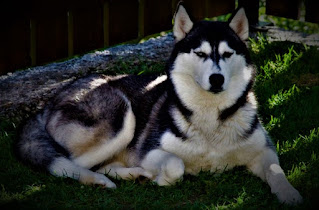East Siberian huskies
history
East Siberian husky is one of the four main varieties of
barking that we know today. In fact, there were many more of these varieties -
at the end of the 19th century, there were several dozen of them. All these
native dogs descended from the wolf in time immemorial, and still hold many
similarities.
Laiki lived together with the indigenous peoples of the
north and many people had their own breed of huskies. Over time,
industrialization, subjugation of the north, contact of indigenous people with
newcomers, and the appearance of other breeds led to a decrease in the number
of barks. Needless to say - the number of Aboriginal tribes in the early 20th
century also steadily decreased. Therefore, it was decided to allocate 4 main
types of barks, in order to save the breed from complete extinction. So there
were:
- East Siberian husky;
- West Siberian husky;
- Karlo-Finnish husky;
- Russian-European huskies;
The breed of East Siberian husky is considered rare all over
the world today, whereas in Russia it is quite common. These dogs are
recognized by all international cynological organizations.
Characteristics
of the breed
popularity 01/10
training 10/10
size 06/10
mind 09/10
protection 09/10
Relationships with
children 07/10
Dexterity 10/10
Breed information
|
country |
USSR |
|
lifetime |
12-15 years old |
|
height |
Males: 55-66 |
|
weight |
Males: 18-23 |
|
Longwool |
Average |
|
Color |
black, white, yellow-brown, gray, brown |
price |
100 - 400 $ |
description
These are medium-sized dogs, with athletic physiques, strong,
strong, muscular. The muzzle is slightly elongated, the ears are standing, the
limbs are medium length, and the tail is medium, swirling upwards. The chest is expressed;
the wool is medium length.
personality
The breed of East Siberian husky carries many qualities of
native hunting dogs, including - hunting instincts. If you are into hunting,
such a dog is ideal for you as a pet. This is a hardy, intelligent, strong, and
extremely devoted dog who can spend the whole day in the woods without food,
hunting down the beast together with the owner.
The breed has excellent flair, holds a good track, and
generally feels at home in the forest. However, so it is - the forest for the
East Siberian husky, really - the home of the native. Hence the pattern - the
best place to keep such a dog is a private house with its own yard. Although,
this breed can safely adapt to the city apartment, provided that will get
regular access to the park and forest.
East Siberian huskies get along well with other dogs,
especially if joint upbringing begins at an early age. Small animals, including
cats, will definitely be a problem. Cats can be taught, but you need to do it
while your dog is still a puppy. The dog treats people in general well, but to
strangers - with caution, which is quite natural.
If the dog realizes himself as a watchman, he will bark at
strangers, but as guard dogs, this breed fits badly. In relation to his family,
the pet shows great love and devotion, and tries to please, although sometimes can
be stubborn. Not recommended for novice owners.
Children are perceived normally, especially if there is an
opportunity to play with them. He has a high level of energy and needs long walks
and various types of activity, including exercise, to maintain his musculature.
He's not afraid of the cold.
Common diseases
These are very healthy and hardy dogs, with excellent
immunity - they rarely get sick.






.jpg)
.jpg)
.jpg)
0 Comments